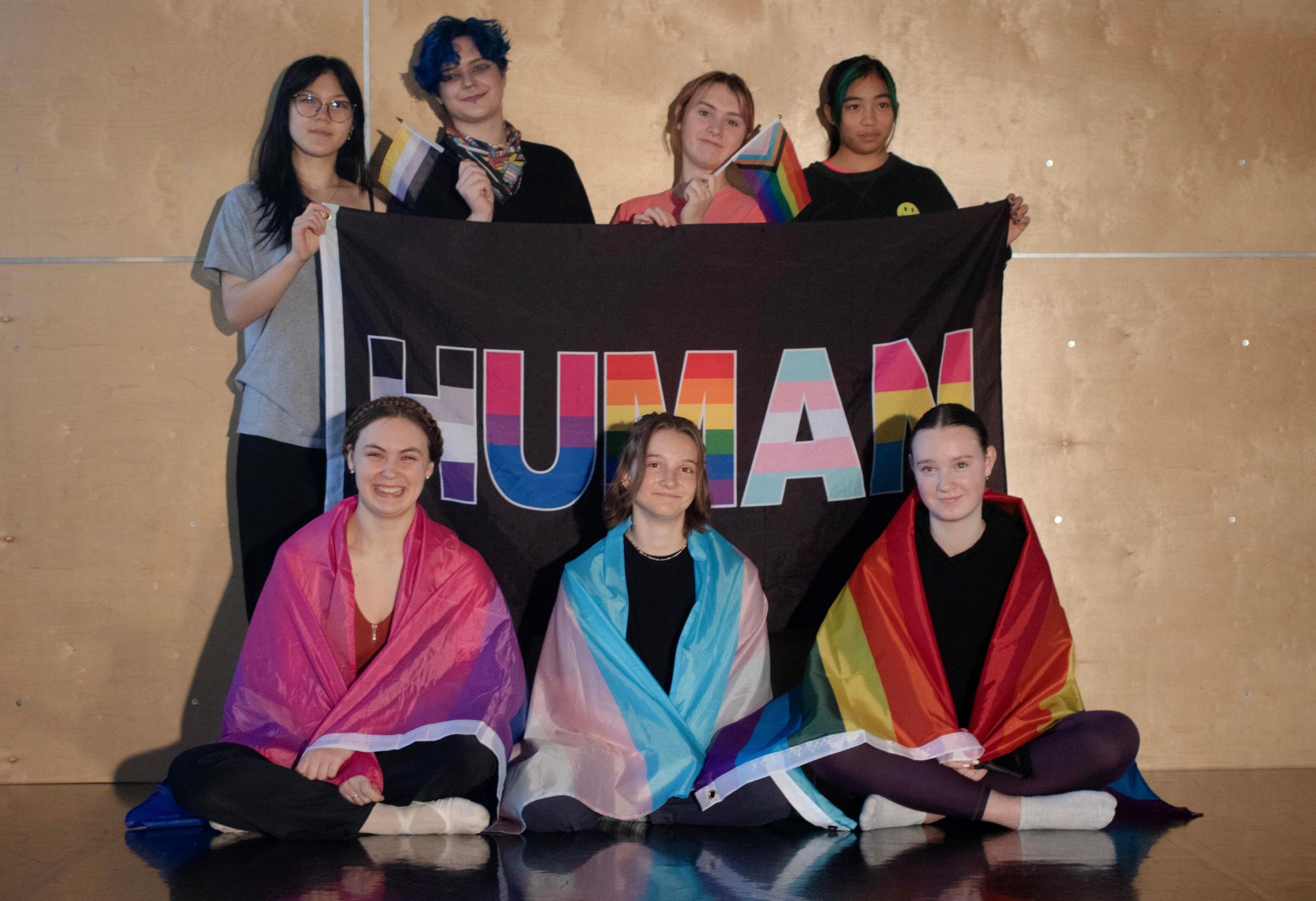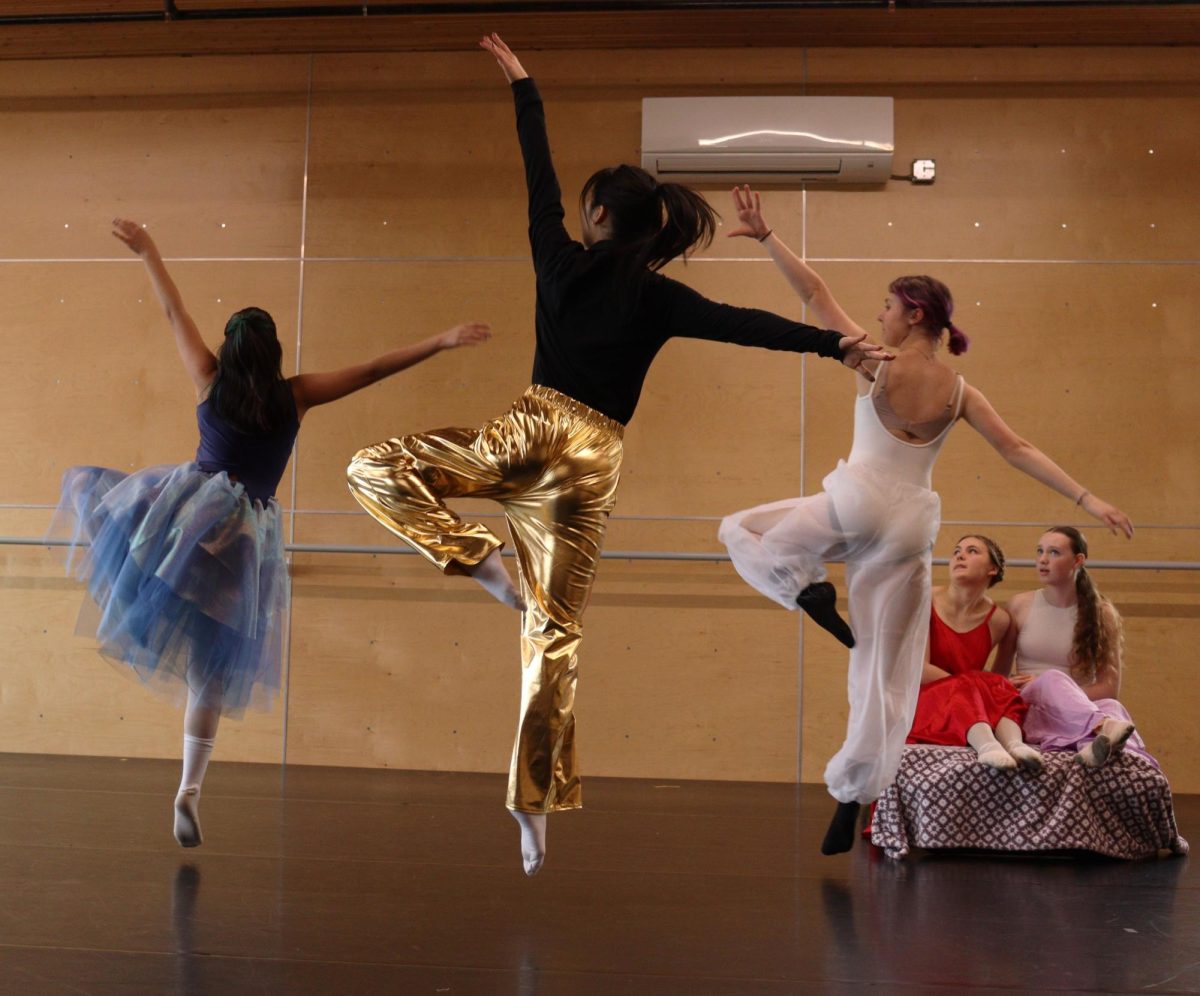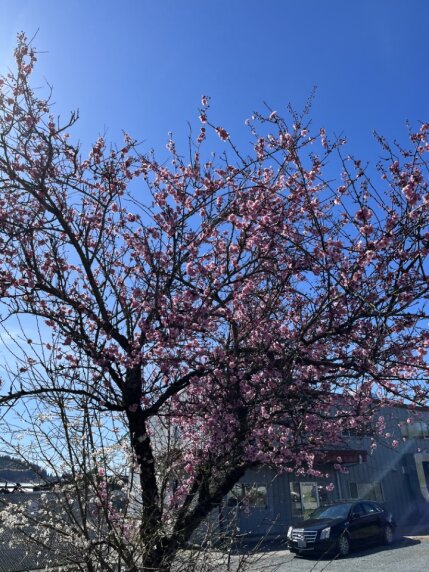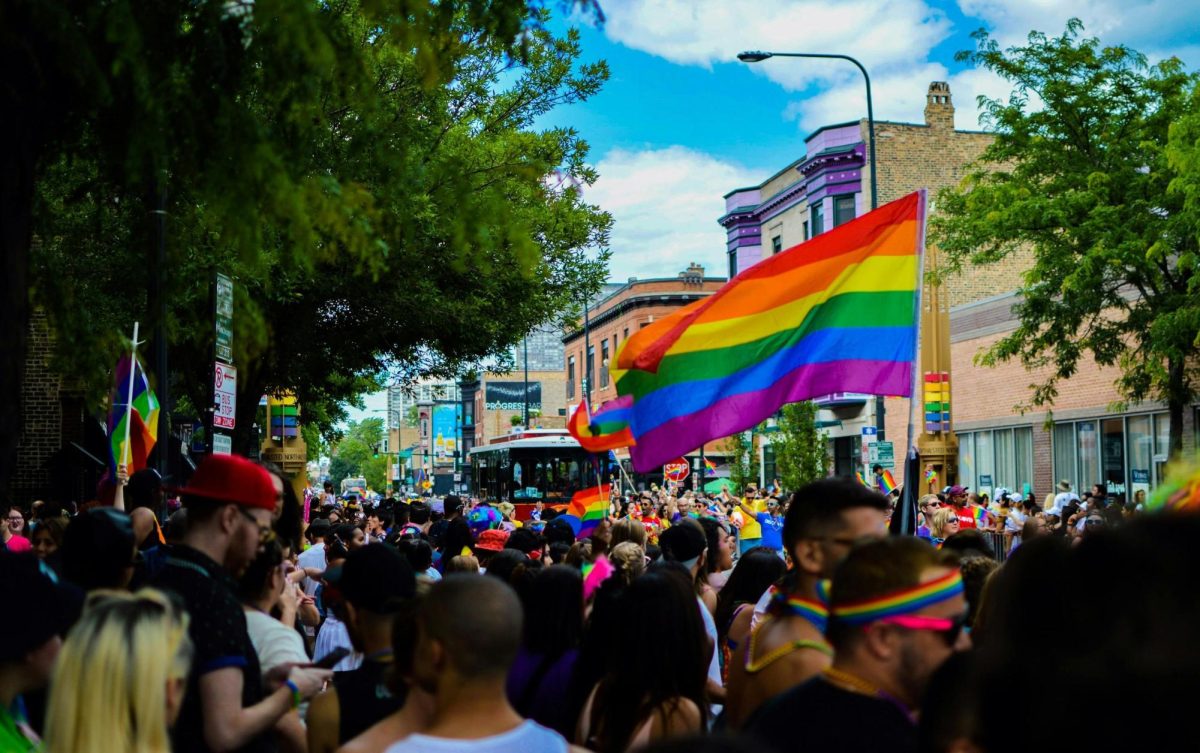A Very Queer Ballet (Not A Love Story), or, AVQB; written, directed, and choreographed by Bellingham High School student Atlas Hovdesven; came to the stage of the New Prospect Theater for just two nights, Friday Apr. 12 and Saturday Apr. 13, where their tickets more than sold out.
The ballet follows River (Ella Bach), a twelve-year-old trans boy grappling with dysphoria and the fear of his loved ones not accepting him. Throughout the performance, River battles Dysphoria Demons (Jessica Zheng, Helena Somers, Abigail Ormsby, Sage McGowan) with the help of his friend Harper (Jax Jimenez) before eventually confronting his sister, Violet (Charlotte Miller), and his mother, Dawn (Emmy Gockel), about his identity.
Though AVQB focuses primarily on the trans experience and the struggles that come with it, it also touches on other LGBTQIA+ experiences through Violet, who is a closeted lesbian. Violet and her girlfriend Rose (Helena Somers) play a pivotal role in helping River come out to his mother, and Rose helps to mediate Dawn’s initially defensive reaction when she learns of Violet’s sexuality and River’s gender.
“River’s story is also meant to show that being transgender is a process, and that there are happy moments as well as very difficult ones,” says Atlas Hovdesven, writer, choreographer, and director of A Very Queer Ballet (Not A Love Story).
Hovdesven began doing ballet when they were two years old, and it has since become a large part of his identity. However, they have also become unsatisfied with the strict and monotonous structure of classical ballets like Giselle, Swan Lake, and La Bayadère.
“Ballet is so heteronormative and rigid. In existing ballets, there is almost no room for diversity or to tell other meaningful stories,” says Hovdesven, “I have always been frustrated by, frankly, how boring ballet stories are, and I wanted to create something that pushed the boundaries of what a story ballet can be.”
So, Hovdesven wrote AVQB in 2022, after having come out as trans in 2021, not only to tell a story that isn’t often seen in ballet, but also to begin carving out a community for queer dancers who haven’t had one in the dance world yet.
Though Hovdesven has been dancing ballet from a very young age, he has branched out into more contemporary styles as well. They choreographed musicals for Bellingham High School and STMI, and discovered that working with musical theater can led them to new heights.
“I have found that it is much easier to tell stories through contemporary dance rather than adhering strictly to classical ballet positions and movements,” Hovdesven remarked, “The more contemporary aspect of the show is also meant to represent the changing and growing nature of dance and the world, and the fact that dance is allowed to change.”
A lot of thought and care was put into every aspect of the show, from choreography, to sound, to lighting.
“One of the big themes in the choreography is movement in circles (manège), which can represent several different things like mental spirals, community, or cyclicality,” says Hovdesven.
The lighting and sound of the show came together to support the choreography, too, each having just as much mindfulness about them.
“Atlas and I had multiple meetings about what emotions they wanted to put forth and what colors could correspond with that,” says Sunny Holton, technical director and stage manager for AVQB.
Much of the color symbolism in AVQB seems to correspond with River’s mood and how comfortable he feels in his own skin. The stage is swathed in blue when he’s comfortable, and in reddish tints when he’s dealing with Dysphoria Demons. The music and sound effects also support the messages conveyed by the lighting, even though they lack lyrics.
“I wanted to show that it is possible to tell important stories without words, and that movement has enough power to tell these stories,” says Hovdesven.
However, despite the lack of words, sound still played an important role in A Very Queer Ballet (Not A Love Story), with several sound motifs representing different characters making appearances. At the end of the “Community” dance, meant to show the joy and diversity present in the LGBTQIA+ community, the stage took on a slight red tint and the Dysphoria Demon Soloist’s sound motif could be heard. Even at the height of happiness and acceptance in the ballet, the threat of dysphoria and other struggles for the LGBTQIA+ community still persist.
“The only way we can make a true impact is by carrying this story on beyond the weekend,” said Hovdesven in their director’s note, “This story is not only a reflection of my own story as a queer dancer, but of the stories of many others who don’t have the resources or community to be seen as themselves. Queer and transgender dancers exist, and we refuse to be erased from the community and history of dance.”














